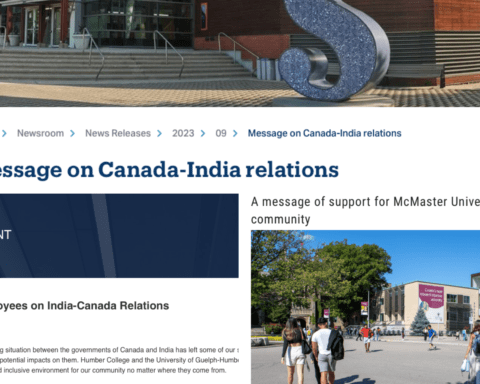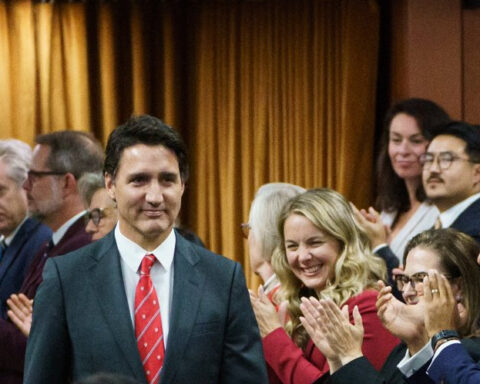 Prime Minister Justin Trudeau’s arrival in New Delhi on February 17 for a week-long state visit marks the 12th visit by a member of his cabinet to India, and given his position, the most important one.
Prime Minister Justin Trudeau’s arrival in New Delhi on February 17 for a week-long state visit marks the 12th visit by a member of his cabinet to India, and given his position, the most important one.
The significance of Trudeau’s visit is clear — India matters to Canada, as a friend and a trading partner with still-unrealized potential at a time when Canada seeks to broaden and deepen its international markets.
“The building blocks are there. Two-way trade between Canada and India was nearly $8 billion in 2016, even though there have been setbacks and slow progress in formal trade talks.”
Canada and India have been talking for a while about reaching more comprehensive trade and investment agreements. But the real significance of this visit is already comprehensive — there’s a positive shift in our relationship that we’re ready to build on together.
The building blocks are there. Two-way trade between Canada and India was nearly $8 billion in 2016, even though there have been setbacks and slow progress in formal trade talks.
We do that amount of two-way trade with the United States every four days. But when it comes to Canada-India trade, the modesty of the numbers is a reflection of the past, not the promise of the future.
The obstacles are obvious too. Late last year, Indian government officials slapped an increased tariff on pulses — the little yellow peas that are a staple in South Asia, which Canadian farmers export to India.
Yet we have common ground. Canada is the biggest contributor of pulses to India, and India benefits when our supply is not constricted by tariffs.
There’s no substitute for a meeting between two leaders to reach a better understanding and make it easier to trade commodities.
Canada and India have been negotiating those free trade and investments agreements for some time now — and they may well take longer. That doesn’t negate the need for a sustained engagement with India across multiple sectors.
This visit is an opportunity — to find more common ground. The elements for stronger trade, business and investment relationships between Canada and India are apparent in the number of sectors that are robust and growing yet still relatively untapped.
There are huge opportunities to expand in tourism, research and skills, medical science, technology and innovation.
Some trading partners in the world lament a brain drain, where talented people leave. Between Canada and India it’s a brain chain, where the best and brightest in both countries complement and bolster each others’ achievements.
For example, Canada is one of the most welcoming countries, reflected in our increased immigration targets at a time when others in the G7 are cutting back.
More than a million Canadians trace their roots to India; they provide a natural bridge to newcomers. Canada has increasing potential as a magnet for higher education among promising Indian students, which contributes to research and innovation in both countries.
Canadians and Indians also share many similar attitudes and values in their outlook to solving global problems. On the economic front, Indian states now embrace cooperative and competitive federalism, marketing themselves internationally the way our provinces do.
Canadians and Indians also share many values when it comes to pluralism and diversity, and both countries are in sync on combatting climate change and the Paris Accord.
Public institutions in both countries have legitimacy in ways that either don’t exist in other places or are under severe strain.
Global studies such as the Pew Global Survey and 2018 Edelman Public Trust Barometer show that Canada and India rank consistently high in the public’s trust of institutions.
The strong Canadian team led by Prime Minister Trudeau, who is accompanied by senior Cabinet ministers, demonstrates Canada’s commitment to a wider and deeper relationship with India.
The Canadian brand is a compelling one that resonates with India. There is nothing like a prime ministerial visit — it provides an extraordinary platform to demonstrate the breadth and depth of our engagement.
Kasi Rao is President and CEO of the Canada-India Business Council (C-IBC). Republished under arrangement with iPolitics.




